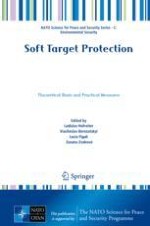This proceedings volume includes articles presented during the Advanced Research Workshop on Soft Target Protection.
The book presents important topics related to the protection of vulnerable objects and spaces, called Soft Targets. The chapters published in this book are thematically assigned to the blocks as follows: Theoretical aspect of soft target protection; Blast resistance of soft targets; Counter terrorism; Technical and technological solutions for soft target protection; Scheme and organizational measures; Blast protection and Forces for soft target protection.
In this book, the reader will find a wealth of information about the theoretical background for designing protection of soft targets, as well as the specifics of protecting objects in armed conflict areas. New methods and procedures applicable to the soft target protection are described.
